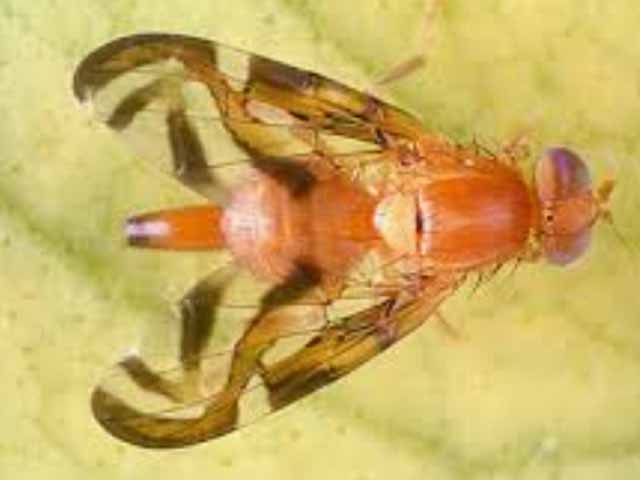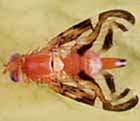Caribbean Fruit Fly
Pest Profile


The Caribbean fruit fly is about 1/3 inch long. It has a yellow tan body with a black spot on the top of the thorax at the scutellum, and clear wings with a typical brown Anastrepha-type wing pattern with an “S” across the wing (Fig. 1). The female ovipositor is about as long as the abdomen. The immature stages are superficially similar to those of other invasive fruit flies. Eggs are white, very small, elongate, and somewhat banana-shaped. Larvae are white, legless, and somewhat carrot-shaped. The pupa is contained inside an elongate oval, shiny brown, hard puparium.
Life Cycle
A typical life cycle for this pest is:
- Egg Stage: Females lay eggs singly under the skin of mature to overripe host fruits. Time taken for development depends on the ambient temperature.
- Larva: The larvae drop from the fruit and burrow into the soil to pupate.
- Pupa: Maggots tunnel through the fruit feeding on the pulp, shed their skins twice, and emerge through exit holes in 10-14 days.
- Adult Stage: In 10 to 14 days, adults emerge from these puparia. Breeding is continuous, with several generations possible each year.
Economic Importance and Host
The Caribbean fruit fly has been recorded infesting a number of cultivated and wild fruit including apple, avocado, bell pepper, carambola, citrus, date palm, guava, kumquat, loquat, mango, papaya, peach, pear, pomegranate, and tropical almond. In California, the combined 2024 gross value of the above hosts was over $4.07 billion.
